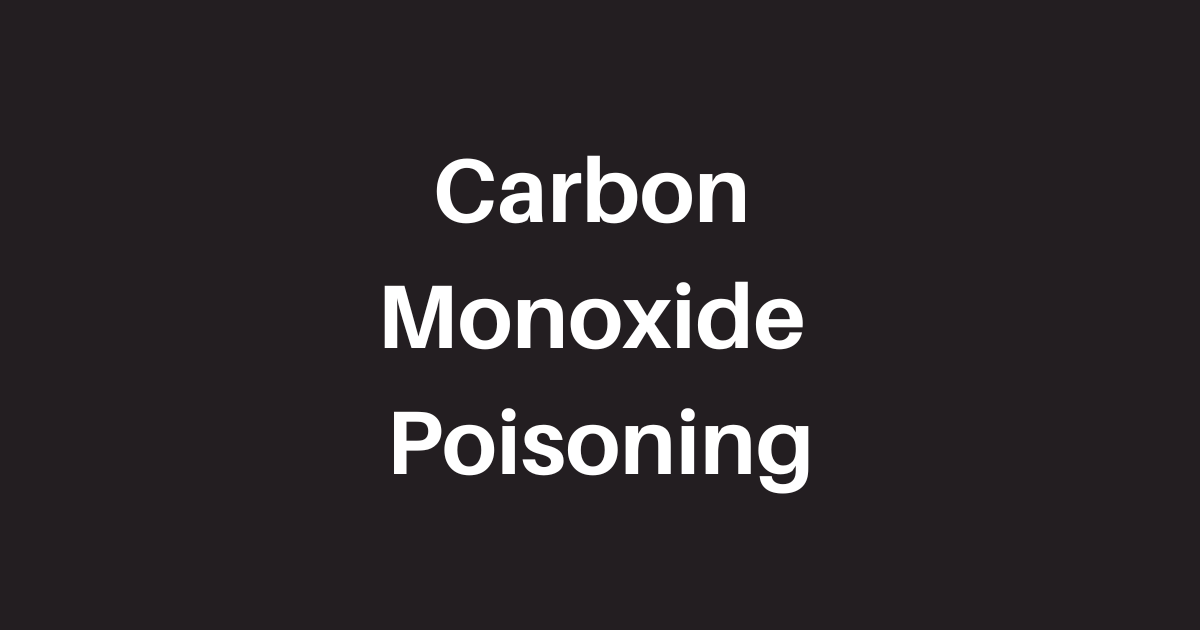Prevent Carbon Monoxide (CO) Poisoning

Carbon monoxide (CO) poisoning affects thousands of Americans each year. Mild effects, such as headaches, dizziness, and nausea, may be mistaken for the flu. Severe effects of carbon monoxide poisoning may cause death.
Winter is a more vulnerable time for potential carbon monoxide poisoning. Here’s why: in the winter, the cold air contains less oxygen. Carbon monoxide in the air we breathe becomes more concentrated – and more dangerous!
In the winter, we use our furnaces and fireplaces, which are potent sources of carbon monoxide. If they are not properly vented and separated from occupied spaces, the gases of combustion may enter the building.
Another Consideration: We rely on an open garage door to let carbon monoxide escape. But if the wind is blowing into the garage, the carbon monoxide is not going to escape. And if the garage door is closed quickly to keep the cold air out, the carbon monoxide may not escape. In these cases, gasses can quickly build up to dangerous levels.
What is carbon monoxide?
Carbon monoxide is a colorless, tasteless, odorless gas that is present in the air we breathe in small concentrations. In larger concentrations, carbon monoxide can be deadly. Carbon monoxide can be produced in higher concentrations as a product of combustion. Vehicles, fireplaces, furnaces, space heaters, generators, stoves,hot water heaters, grills, and other appliances can be sources of carbon monoxide.
Buildings and Carbon Monoxide
Architects design buildings and their systems to protect people from toxic gases. For instance, buildings provide a barrier between occupied spaces and carbon monoxide producing areas, such as garages. Building systems are also designed to remove carbon monoxide from occupied spaces and to warn occupants of potential high levels of carbon monoxide.
Why is there a step up to my house from the garage? In residential settings, codes require a 6” step up to the house. This is because carbon monoxide is heavier than air. That means it falls and rests in the lower part of the garage, near the floor. If the garage floor is lower than the house floor, it will not enter the house at that point.
We also recommend using carbon monoxide detectors. Carbon monoxide detectors trigger a warning alarm before carbon monoxide reaches dangerous levels. Detectors should be connected to an electrical power source and should have a battery back-up in the event of a power outage. They should be replaced per manufacturer’s recommendation, as they do not last forever.
Commercial and Industrial Solutions
Contact us to discuss more complex situations such as those found in commercial and industrial buildings. Specialized solutions may be warranted and are available to mitigate the potential exposure to carbon monoxide.
For instance, in commercial and industrial applications, a carbon monoxide detection system may be interlocked with garage doors. The system causes the garage doors to open and exhaust systems to activate if a vehicle runs for greater than 15 seconds. This is a good option for buildings in which vehicles are operated indoors, such as auto shops and drive-thru warehouses.
What can I do to reduce exposure to carbon monoxide?
The EPA recommends the following steps to reduce exposure:
- Regularly have a trained professional inspect, clean, and tune-up central heating systems (furnaces, flues, and chimneys) annually. Repair any leaks promptly.
- Maintain and adjust combustion equipment, including gas appliances.
- Use vented space heaters.
- Use a vented exhaust fan over gas stoves.
- Open fireplace flues when in use.
- Choose properly sized wood stoves with doors that fit tightly.
- Do not idle vehicles indoors.
- Manage vehicular use adjacent to buildings, in warehouses, in auto shops, and in vocational programs.
- Consider providing additional ventilation when high levels of carbon monoxide are expected for short periods of time.
- Keep generators and grills outside. Carbon monoxide can build up indoors and can linger for hours after tools have been shut off.
This winter, be aware of the dangers of carbon monoxide and take steps to reduce exposure.



